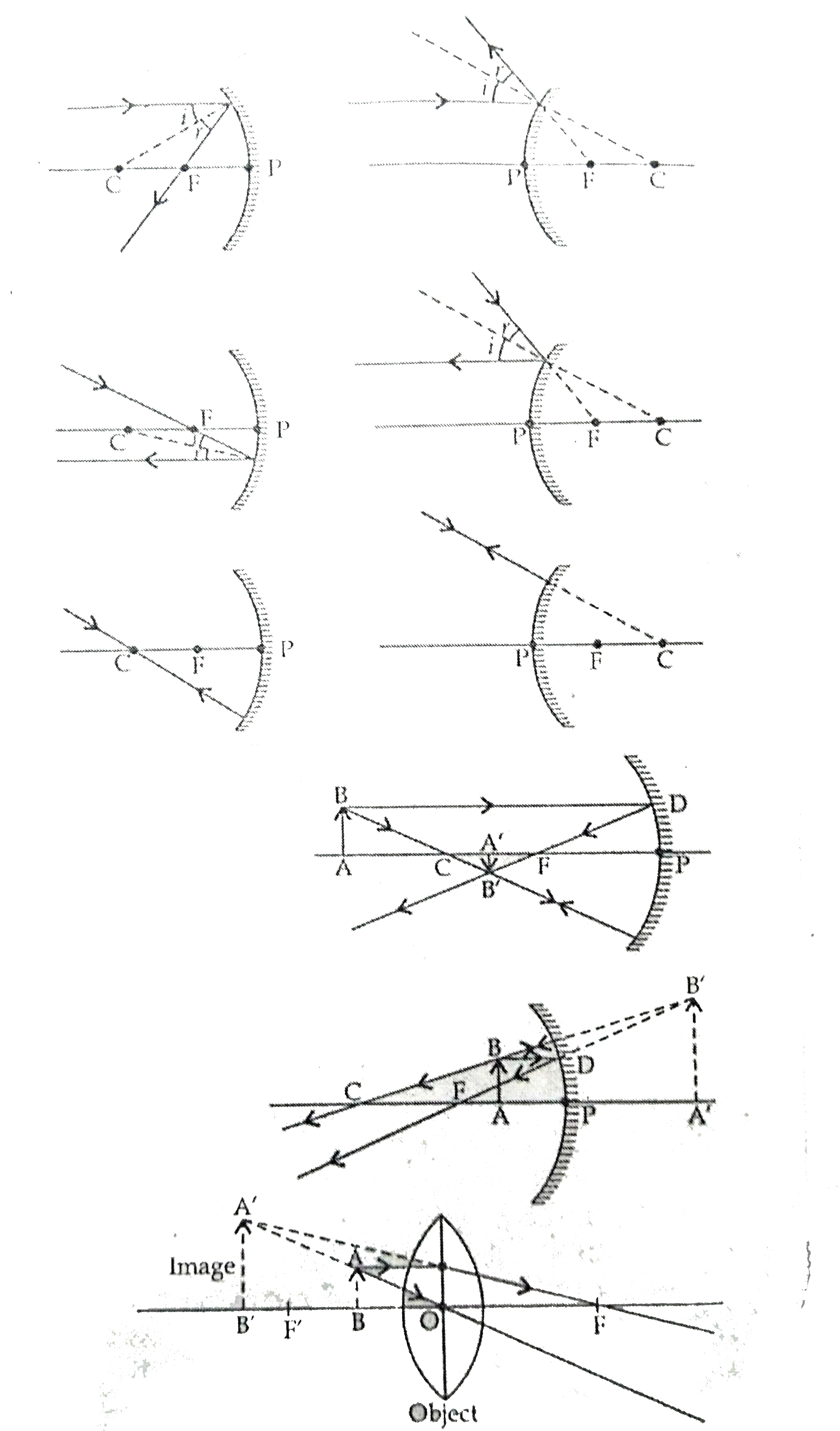(a) To construct a ray diagram we use two light rays which are so chosen that it is easy to know their directions after reflection. Use these two rays to locate the image of an object placed between infinity and the centre of curvature of a concave mirror.
(b) Draw a ray diagram to show the formation of image of an object placed between the pole and principal focus of a concave mirror. How will the nature and size of the image formed change, if the mirror is replaced by a converging lens of same focal length?
(a) The rays for obtaining image from the mirror after reflection are so chosen that it is easy to know their directions after reflection from the mirror.
(i) A ray parallel to the principal axis, after reflection passes through the focus in concave mirror or appears to pass through the focus in convex mirror.
(ii) A ray passing through the principal focus of a concave mirror or directed towards the principal focus in convex mirror after reflection will emerge parallel to the principal axis.
(iii) A ray passing through the centre of curvature of the concave mirror or directed in the direction of the centre of curvature of the convex mirror is reflected back along the same path after reflection.

⋅ When the object is placed between infinity and the centre of curvature of a concave mirror.
(b)⋅ When the object is placed between the pole and principal focus of a concave mirror.
⋅ If the object is placed between the 'O' and principal focus of a converging lens (convex lens).
Similar Questions
Draw a ray diagram showing the formation of image of a point object by a plane mirror.
View SolutionWith the help of a ray diagram, show the formation of an image of an object placed between principal focus and centre of curvature of a concave mirror.
View SolutionTo construct a ray diagram, we use two rays which are so chosen that it is easy to know their directions after reflection from the mirror. List two such rays and state the path of these rays after reflection in case of concave mirrors. Use these two rays and draw ray diagram to locate the image of an object placed between pole and focus of a concave mirror.
View Solution(a) To construct a ray diagram, we use two rays which are so chosen that it is easy to know their directions after reflection from the mirror. List two such rays and state the path of these rays after reflection in case of concave mirrors. Use these two rays and draw ray diagram to locate the image of an object placed between pole and focus of a concave mirror.
(b) A concave mirror produces three times magnified image on a screen. If the object is placed 20 cm in front of the mirror, how far is the screen from the object?
View SolutionDraw a ray diagram to show the formation of image by a concave mirror for an object placed between its pole and focus. State three characteristics of the image.

View SolutionTo construct a ray diagram we use two rays of light which are so chosen that it is easy to determine their directions after reflection from the mirror. Choose these two rays and state the path of these rays after reflection from a concave mirror. Use these two rays to find the nature and position of the image of an object placed at a distance of 15 cm from a concave mirror of focal length 10 cm.
View SolutionTo construct a ray diagram we use two rays of light which are so chosen that it is easy to determine their directions after reflection from the mirror. Choose these two rays and state the path of these rays after reflection from a concave mirror. Use these two rays to find the nature and position of the image of an object placed at a distance of 15 cm from a concave mirror of focal length 10 cm.
View SolutionTo construct a ray diagram we use two rays of light which are so chosen that it is easy to determine their directions after reflection from the mirror. Choose these two ras and state the path of these rays after reflection from a concave mirror . Use these two rays to find the nature and position of the image of an object plced at a distance of 15 cm from a concave mirror of focal length 10 cm.
View SolutionTo construct a ray diagram we use two rays of light which are so chosen that it is easy to determine their directions after reflection from the mirror. Choose these two ras and state the path of these rays after reflection from a concave mirror . Use these two rays to find the nature and position of the image of an object plced at a distance of 15 cm from a concave mirror of focal length 10 cm.
View SolutionDraw ray diagram to show formation of magnified real image of an object by a concave mirror.
View Solution
